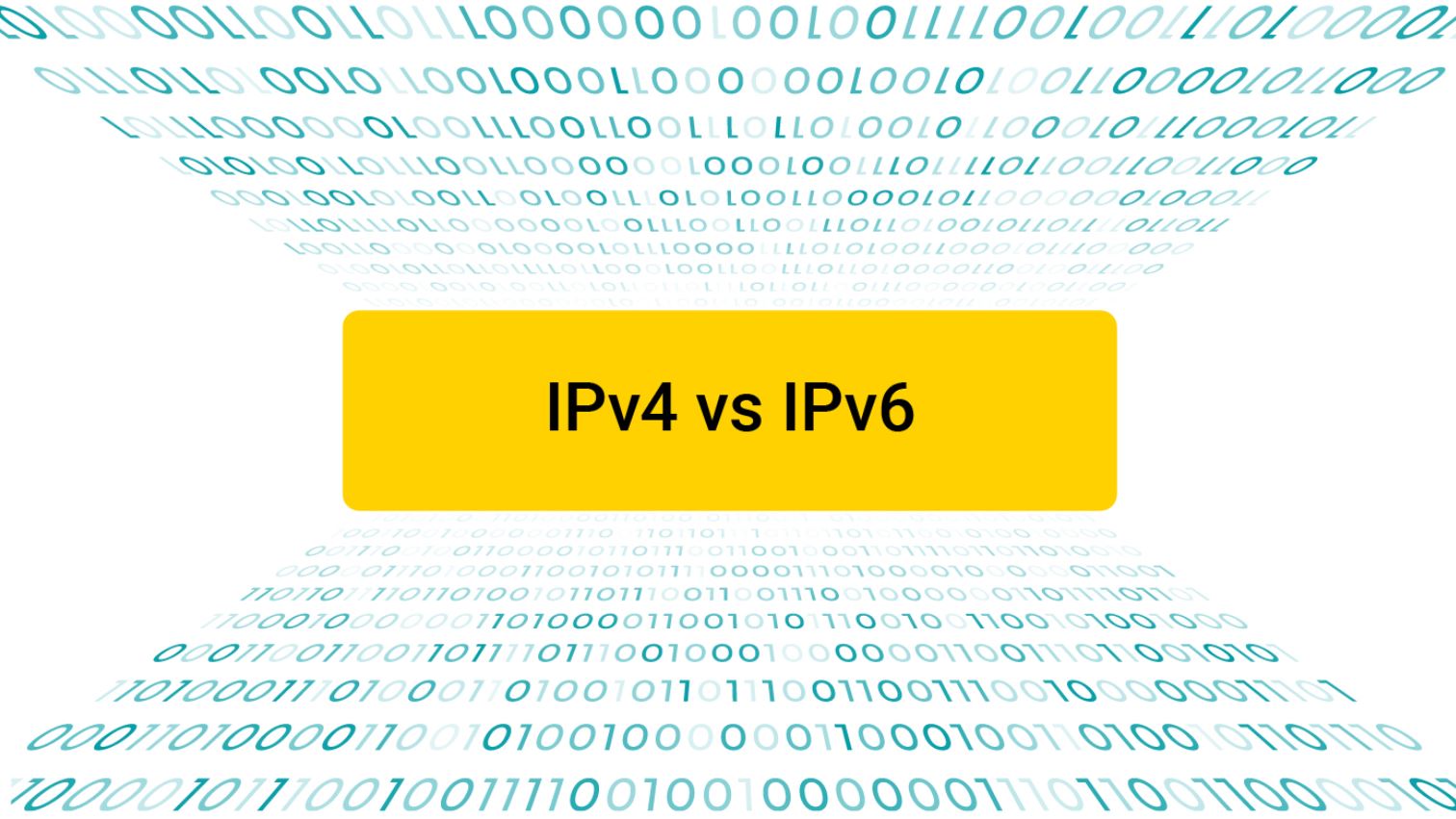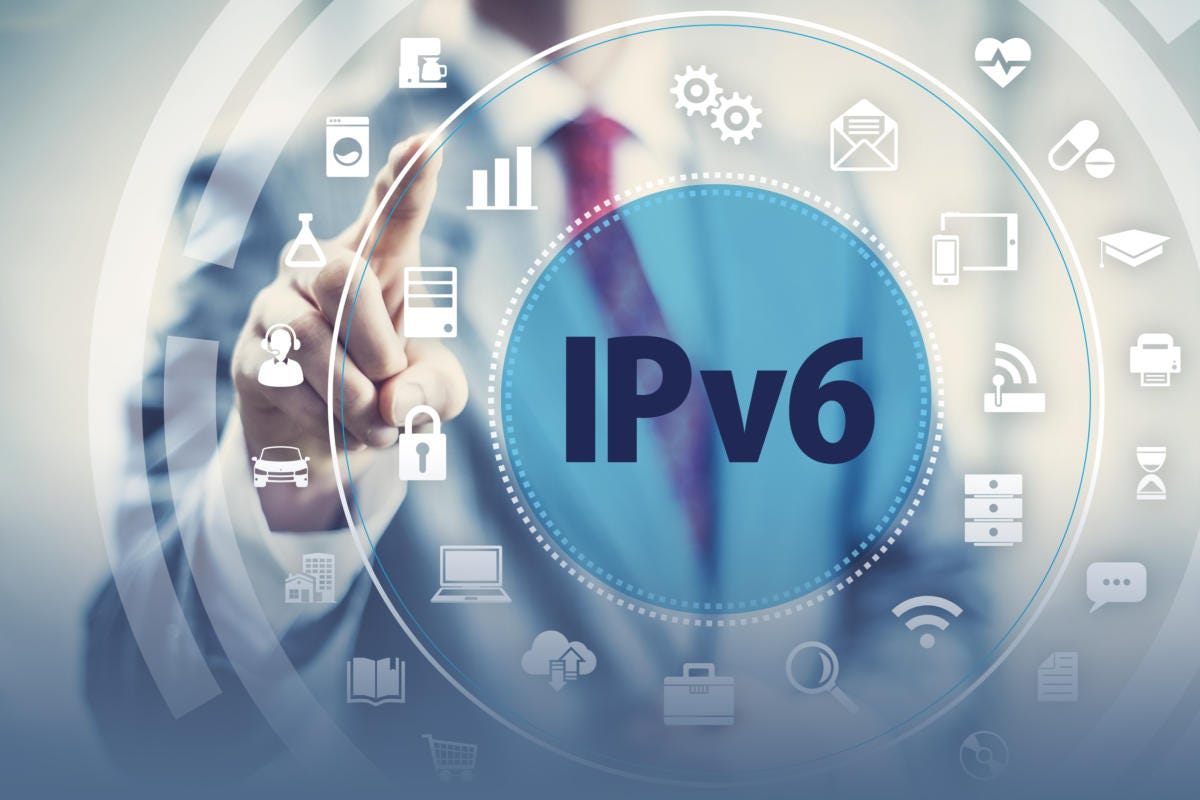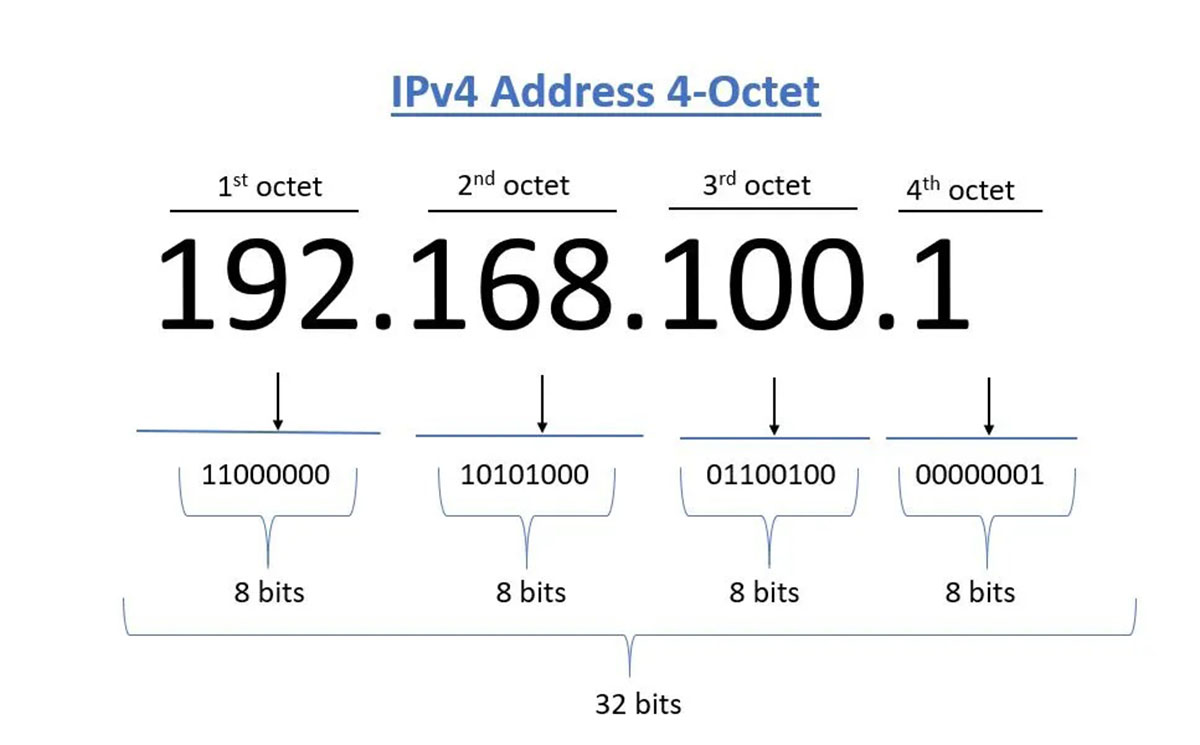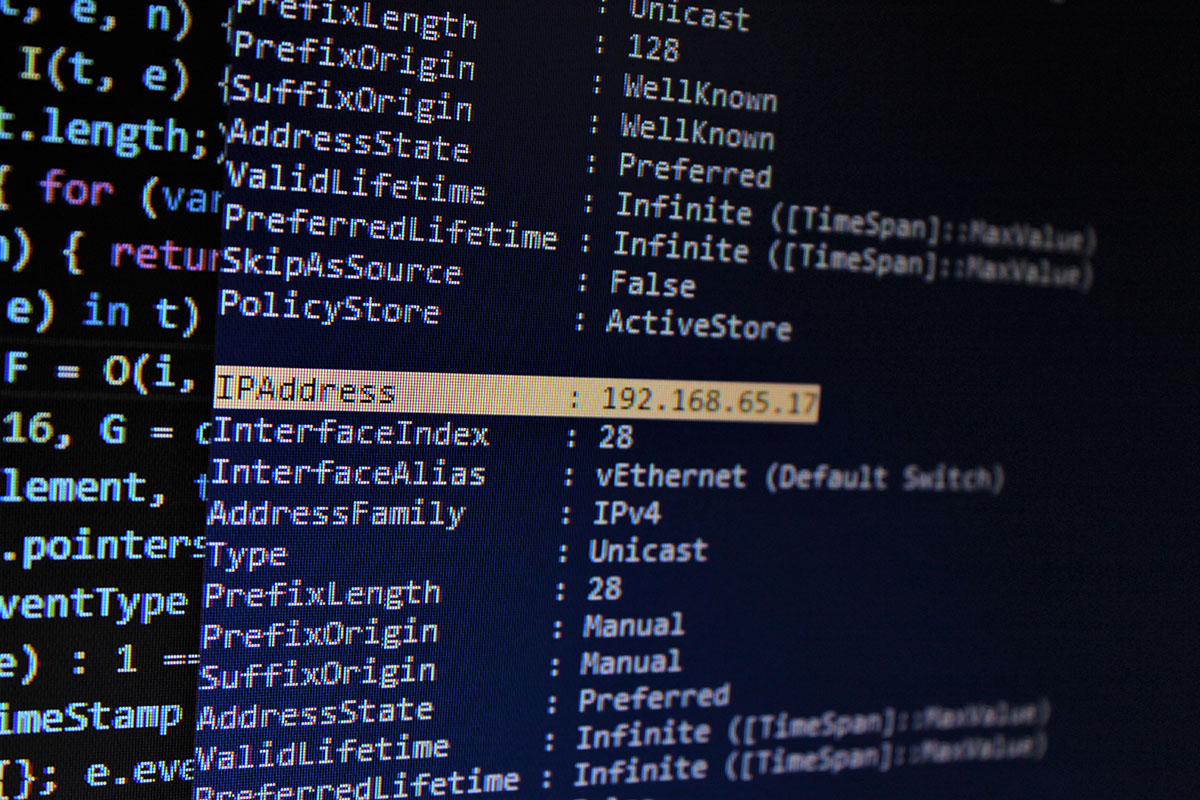Introduction
Welcome to the digital age, where the Internet of Things (IoT) has revolutionized the way we live and interact with technology. From smart homes to connected cars, IoT technology has permeated almost every aspect of our daily lives. But have you ever wondered how all these devices communicate with each other? That’s where Internet Protocol (IP) comes in.
Internet Protocol is the set of rules or protocols that governs the transfer of data over the internet. The most commonly used version of IP is IPv4 (Internet Protocol version 4), which has served as the backbone of the internet for decades. However, with the rapid growth of IoT devices, IPv4 has started showing its limitations.
In this article, we will explore why IPv6 (Internet Protocol version 6) is preferred over IPv4 for IoT implementation. We will discuss the challenges with using IPv4 for IoT devices and the benefits that IPv6 offers in terms of expanded address space, improved security features, simplified network configuration, and better support for mobility and auto-configuration.
So, whether you are an IoT enthusiast or just curious about the technology behind it, let’s delve into the world of IPv6 and discover why it is the preferred choice for IoT implementation.
What is IPv6?
IPv6, which stands for Internet Protocol version 6, is the latest iteration of the IP protocol. It was developed to replace IPv4 and overcome its limitations. While IPv4 uses a 32-bit addressing system, which allows for approximately 4.3 billion unique IP addresses, IPv6 utilizes a 128-bit addressing system, offering an astonishingly large number of unique addresses.
The primary motivation behind the development of IPv6 was the exhaustion of IPv4 addresses. With the explosive growth of the internet and the proliferation of connected devices, the number of available IPv4 addresses became insufficient. IPv6’s expanded address space, with its ability to accommodate 3.4 x 10^38 unique addresses, ensures that the IoT ecosystem can continue to grow without running out of addresses.
In addition to the expanded address space, IPv6 brings several other improvements. One notable feature is the inclusion of built-in security features. IPv6 incorporates IPsec (Internet Protocol Security) as a mandatory part of the protocol, ensuring end-to-end encryption and secure communication between IoT devices. This enhanced security is especially crucial in IoT environments where devices often handle sensitive data or control critical systems.
Another advantage of IPv6 is the simplified network configuration it offers. With IPv4, various network configurations, such as Dynamic Host Configuration Protocol (DHCP) and Network Address Translation (NAT), were necessary to manage the limited number of available addresses. In contrast, IPv6 provides auto-configuration capabilities, allowing devices to assign themselves unique IP addresses and join the network seamlessly. This plug-and-play functionality simplifies deployment and reduces administrative overhead for IoT implementations.
Furthermore, IPv6 offers better support for mobility and auto-configuration. With the proliferation of mobile devices and IoT devices, the ability to roam between networks while maintaining connectivity becomes crucial. IPv6 simplifies the process by enabling devices to dynamically acquire new IP addresses as they move between networks. This seamless handover ensures uninterrupted connectivity for IoT devices, enhancing their usability and reliability.
In summary, IPv6 is the next-generation protocol designed to address the limitations of IPv4, particularly in the context of IoT implementations. Its expanded address space, improved security features, simplified network configuration, and support for mobility make it the preferred choice for the growing IoT ecosystem.
What is IoT?
The Internet of Things (IoT) refers to a network of physical objects or “things” that are embedded with sensors, software, and connectivity, allowing them to communicate and exchange data with each other over the internet. These objects can range from everyday devices like smartphones, wearable fitness trackers, and smart thermostats to industrial machinery and vehicles.
The concept of IoT revolves around the idea of creating an interconnected system where devices can collect, analyze, and transmit data, enabling them to operate more efficiently and provide valuable insights. This network of connected devices opens up endless possibilities for automation, remote monitoring, and intelligent decision-making across various industries and sectors.
One of the key aspects of IoT is the ability of devices to communicate with one another without human intervention. This interconnectedness allows for seamless integration and interaction between devices, enabling them to work together to perform complex tasks. For example, a smart home system could include devices like smart lights, security cameras, and thermostats that can communicate with each other to create an automated and personalized living experience.
IoT is not just limited to consumer applications. It has a significant impact on industries such as healthcare, agriculture, transportation, and manufacturing. In healthcare, IoT devices can monitor patients’ vital signs, track medication adherence, and enable remote consultations with healthcare professionals. In agriculture, sensors embedded in soil can provide real-time information about moisture levels, helping farmers optimize irrigation and conserve water.
The data generated by IoT devices is a valuable resource that can drive insights and analysis. Machine learning algorithms and artificial intelligence (AI) can be employed to process and make sense of the vast amount of data collected by IoT devices, enabling predictive maintenance, anomaly detection, and automation of various processes.
As IoT continues to evolve, the potential applications and benefits are immense. From improving efficiency and productivity to enhancing safety and sustainability, IoT is transforming the way we interact with the world around us.
Challenges with using IPv4 for IoT implementation
While IPv4 has served as the foundation for internet communication for many years, it poses several challenges when it comes to IoT implementation. These challenges arise due to the limited number of available IPv4 addresses and the unique requirements of IoT devices and networks. Let’s explore some of the key challenges:
Address Exhaustion: IPv4 uses a 32-bit addressing system, allowing for approximately 4.3 billion unique addresses. However, with the ever-increasing number of IoT devices, this address space is quickly depleting. As a result, it becomes increasingly difficult to assign unique IPv4 addresses to each IoT device, limiting the scalability of IoT networks.
Network Address Translation (NAT): To overcome the address exhaustion problem, many networks employ Network Address Translation (NAT), which allows multiple devices to share a single public IP address. While NAT extends the usability of IPv4 addresses, it introduces complexities and delays in communication between IoT devices. It requires the use of resource-intensive gateways and adds an additional layer of translation, which can hinder real-time applications and compromise the seamless connectivity required by IoT devices.
Limited Security Features: IPv4 lacks built-in security features, leaving IoT devices vulnerable to various cybersecurity threats. Without encryption and authentication mechanisms, IoT devices are susceptible to unauthorized access, data breaches, and tampering. This security vulnerability is a significant concern for IoT applications that deal with sensitive data, such as healthcare and smart home systems.
Complex Network Configuration: In IPv4-based IoT networks, configuring each IoT device with a unique IP address can be time-consuming and prone to human errors. Additionally, managing the allocation and reassignment of IP addresses in dynamic IoT environments requires manual intervention, making network configuration complex and cumbersome.
Limited Support for Mobility: IPv4 was not designed to handle the rapid movement and mobility of IoT devices. As a result, transferring a device from one network to another can lead to connectivity issues and require manual reconfiguration. This limitation hinders the seamless integration of IoT devices in applications such as smart cities, autonomous vehicles, and asset tracking.
These challenges highlight the shortcomings of IPv4 when it comes to meeting the demands of IoT implementation. To address these issues and unlock the full potential of IoT, the transition to IPv6 becomes crucial.
Benefits of using IPv6 for IoT implementation
IPv6, the next-generation Internet Protocol, offers numerous advantages over IPv4 when it comes to IoT implementation. Its features and capabilities are specifically designed to meet the unique requirements of the growing IoT ecosystem. Let’s explore some of the key benefits:
Expanded Address Space: Perhaps the most significant advantage of IPv6 is its expansive address space. With its 128-bit addressing system, IPv6 can accommodate an astronomical number of unique IP addresses—3.4 x 10^38 to be precise. This virtually unlimited address space enables IoT devices to have their own unique global IP addresses, eliminating the need for NAT and simplifying network management. The expanded address space ensures the scalability and growth potential of IoT networks, even as the number of connected devices continues to soar.
Improved Security Features: IPv6 incorporates IPsec (Internet Protocol Security) as a mandatory component, providing built-in security features. IPsec encrypts and authenticates data at the IP level, ensuring end-to-end secure communication between IoT devices. This enhanced security protection is crucial for IoT applications that handle sensitive data, such as healthcare systems and industrial control systems. With IPv6’s security features, IoT devices are better protected against unauthorized access, data breaches, and tampering.
Simplified Network Configuration: IPv6 introduces simplified network configuration through its built-in auto-configuration capabilities. With IPv6, IoT devices can assign themselves unique IP addresses automatically, eliminating the need for manual configuration or DHCP servers. This plug-and-play functionality simplifies the deployment of IoT devices and reduces administrative overhead. It enables seamless integration and faster onboarding of new devices to the network, enhancing the scalability and manageability of IoT implementations.
Better Support for Mobility and Auto-Configuration: IPv6 provides enhanced support for mobility, allowing IoT devices to roam between networks while maintaining connectivity. With Mobile IPv6, devices can retain their IP addresses even when moving between different networks, ensuring uninterrupted and seamless communication. Additionally, IPv6 offers improved auto-configuration mechanisms, enabling devices to obtain network configurations automatically. This dynamic and self-configuring nature of IPv6 simplifies the setup and management of IoT networks while promoting seamless connectivity and mobility.
In summary, IPv6 brings significant benefits to IoT implementation. Its expanded address space, improved security features, simplified network configuration, and better support for mobility and auto-configuration make it the preferred choice for building scalable and secure IoT networks. As the IoT ecosystem continues to grow, transitioning to IPv6 becomes imperative to fully leverage the potential of connected devices and enable a seamless and secure Internet of Things.
Expanded address space
One of the prominent benefits of using IPv6 for IoT implementation is its expanded address space. Unlike IPv4, which uses a 32-bit addressing system and can provide approximately 4.3 billion unique addresses, IPv6 utilizes a 128-bit addressing system, offering an unimaginably large number of unique addresses. This massive address space, approximately 3.4 x 10^38 unique addresses, ensures that the IoT ecosystem can continue to expand and grow without facing the limitations of address exhaustion.
The expanded address space of IPv6 is essential for accommodating the ever-increasing number of IoT devices. With the proliferation of connected devices for various applications, ranging from smart homes and wearables to industrial systems and smart cities, the demand for IP addresses has skyrocketed. IPv6 offers a vast pool of addresses that can cater to the tremendous growth of IoT devices, ensuring that each device can have its own unique global IP address.
With IPv4, the scarcity of addresses led to workarounds like Network Address Translation (NAT), where multiple devices share a single public IP address. While NAT extended the usability of IPv4 addresses, it introduced complications and introduced delays in communication. Furthermore, NAT hindered the establishment of direct peer-to-peer connections between IoT devices, which are often necessary for real-time communication and seamless integration.
IPv6 eliminates the need for NAT as it provides enough unique addresses to assign individually to each IoT device. Each device can have a globally unique IP address, enabling direct communication and eliminating the complexities introduced by NAT. This direct device-to-device communication allows for more efficient data transfer and facilitates the development of innovative IoT applications that require real-time or low-latency communication.
Furthermore, the expanded address space of IPv6 also brings benefits in terms of scalability and network design. IPv6 allows for hierarchical addressing schemes, which enhance efficiency in routing and network management. Hierarchical addressing enables better routing aggregation and reduces the size of routing tables, contributing to a more streamlined and scalable network infrastructure.
Overall, the expanded address space provided by IPv6 is crucial for accommodating and scaling the rapidly growing IoT ecosystem. With its vast pool of unique addresses, IPv6 ensures that there is no shortage of addresses for the ever-increasing number of IoT devices. Additionally, the elimination of NAT and the adoption of hierarchical addressing contribute to more efficient communication and network management, fostering the development of robust and scalable IoT implementations.
Improved security features
Security is a critical concern when it comes to IoT implementations, as these interconnected devices often handle sensitive data and control critical systems. IPv6 addresses this concern by incorporating improved security features, making it a preferred choice over IPv4 for IoT implementation.
One of the key security enhancements in IPv6 is the inclusion of IPsec (Internet Protocol Security) as a mandatory part of the protocol. IPsec provides robust encryption and authentication mechanisms, ensuring end-to-end secure communication between IoT devices. With IPsec, data is encrypted at the IP level, protecting it from unauthorized access and eavesdropping. This built-in security functionality helps safeguard the integrity and confidentiality of data transmitted over IPv6 networks.
IPsec in IPv6 also enables authentication, allowing IoT devices to verify the identity of each other before establishing a connection. Authentication prevents unauthorized devices from accessing the network and helps detect and mitigate security threats. By ensuring secure and authenticated communication, IPv6 with IPsec enhances the overall security posture of IoT deployments.
Moreover, IPv6 addresses another security concern associated with IPv4: address spoofing. In IPv4, the lack of built-in security features makes it easier for malicious actors to spoof IP addresses and launch attacks. However, IPv6 implementation incorporates features like Address Resolution Protocol (ARP) protection, which prevents address spoofing and helps in detecting and mitigating attacks such as man-in-the-middle (MITM).
Additionally, IPv6 with IPsec provides support for secure neighbor discovery, securing the process of identifying and locating other devices on the network. By mitigating risks associated with neighbor discovery, IPv6 enhances the overall security posture of IoT networks.
By including improved security features like IPsec, IPv6 addresses the vulnerabilities that exist in IPv4-based IoT implementations. These security enhancements ensure that sensitive data transmitted between IoT devices remains encrypted and protected from unauthorized access. With IPv6, communication within the IoT ecosystem becomes more resilient to cybersecurity threats, making it a more secure choice for IoT deployments.
As the IoT landscape continues to expand and face evolving security challenges, the improved security features in IPv6 provide a solid foundation for securing IoT implementations. The inclusion of IPsec and other security components helps safeguard communication, protect sensitive data, and mitigate potential risks, making IPv6 the preferred choice for ensuring secure connectivity within the IoT ecosystem.
Simplified network configuration
IPv6 offers a significant advantage over IPv4 in terms of simplified network configuration, making it an ideal choice for IoT implementations. IPv4 network configurations often involve complex manual processes and the use of additional technologies like Dynamic Host Configuration Protocol (DHCP) and Network Address Translation (NAT). In contrast, IPv6 simplifies the network configuration process through its built-in auto-configuration capabilities.
With IPv6, IoT devices have the ability to assign themselves unique IP addresses automatically, eliminating the need for manual configuration or reliance on DHCP servers. This process, known as stateless address auto-configuration (SLAAC), allows devices to generate and assign themselves a unique IPv6 address based on their network interface identifier. This plug-and-play functionality of IPv6 greatly simplifies the deployment and onboarding of IoT devices to the network.
Stateless address auto-configuration also ensures scalability and flexibility in IoT networks. As new devices are added to the network, they can dynamically generate and assign themselves unique IP addresses without requiring any intervention from network administrators. This automated process allows for faster and more streamlined deployment of IoT devices, reducing the administrative overhead and saving valuable time in network configuration.
Furthermore, IPv6 simplifies the management of IP addresses. In IPv4 networks, administrators have to carefully manage and allocate a limited pool of addresses to devices. With the abundance of unique addresses in IPv6, address management becomes less cumbersome. IPv6 also eliminates the need for technologies like NAT, which was often employed in IPv4 networks to overcome address scarcity. Removing NAT simplifies network configurations and eliminates the complexities introduced by translation processes.
Simplified network configuration in IPv6 has additional benefits beyond ease of deployment. It minimizes the risk of human errors that can occur during manual address assignment, reducing the likelihood of misconfigurations. It also ensures a more secure network, as devices can automatically generate random IPv6 addresses, making them less susceptible to targeted attacks.
Overall, the simplified network configuration capabilities of IPv6 make it highly advantageous for IoT deployments. The built-in auto-configuration capabilities eliminate the need for manual address assignment and DHCP servers, streamlining the deployment and management of IoT devices. This automation not only saves time and reduces administrative overhead but also enhances the scalability and flexibility of IoT networks. By simplifying network configurations, IPv6 helps accelerate the adoption and integration of IoT devices while ensuring a more efficient and secure connection within the IoT ecosystem.
Better support for mobility and auto-configuration
When it comes to IoT implementations, mobility is often a crucial requirement. IoT devices are constantly on the move, whether it’s a wearable health tracker, a connected vehicle, or a smart sensor deployed in a dynamic environment. IPv6 offers better support for mobility, ensuring seamless connectivity for IoT devices as they transition between networks.
IPv6 incorporates mechanisms for mobility support, such as Mobile IPv6, which allows devices to retain their IP addresses even when they move between networks. With Mobile IPv6, IoT devices can maintain continuous connectivity as they roam, preserving ongoing communications and preventing disruptions.
By leveraging Mobile IPv6, IoT devices can roam between networks without the need for manual reconfiguration or interruption in service. This capability is especially critical for applications such as smart transportation, industrial systems, and asset tracking, where devices constantly change their network attachments.
Another aspect where IPv6 outshines its predecessor is in auto-configuration. IPv6 provides improved mechanisms for auto-configuration, making it easier for IoT devices to join networks without manual intervention.
In IPv6, devices can use stateless address auto-configuration (SLAAC) to assign themselves unique IPv6 addresses. This process allows devices to generate their addresses based on their network interface identifier and the network’s prefix information, eliminating the need for DHCP servers or manual configuration.
This automated and self-configuring feature enables IoT devices to seamlessly join networks, reducing the burden on network administrators and simplifying the onboarding process. As new IoT devices are added to the network, they can acquire and configure their IP addresses independently, saving time and administrative effort.
Furthermore, IPv6’s auto-configuration capabilities extend beyond address assignment. It includes additional features such as Domain Name System (DNS) configuration, router discovery, and service discovery. These features enable IoT devices to autonomously obtain the information they need to connect to the network, discover services, and participate in various IoT applications.
IPv6’s support for mobility and auto-configuration contributes to the seamless integration of IoT devices into networks and environments. It enables IoT devices to maintain continuous connectivity, even in the face of network changes, and simplifies the management of large-scale deployments where manual configuration is impractical.
Overall, through its better support for mobility and auto-configuration, IPv6 addresses the unique requirements of IoT implementations. It ensures uninterrupted connectivity for roaming devices, streamlines the onboarding process for new devices, and enhances the scalability and flexibility of IoT networks. With IPv6, IoT devices can seamlessly adapt to network changes, enabling them to function optimally in a dynamic and ever-evolving IoT ecosystem.
Conclusion
The Internet of Things (IoT) has become an integral part of our modern world, connecting an extensive array of devices and enabling innovative applications across various industries. In this article, we have explored why IPv6 is preferred over IPv4 for IoT implementation and the benefits it brings to the IoT ecosystem.
IPv6 offers a range of advantages that address the limitations and challenges of IPv4. Its expanded address space ensures that there are ample unique IP addresses available for the rapidly growing number of IoT devices. This scalability allows for the seamless growth of the IoT ecosystem without the limitations of address exhaustion. Additionally, IPv6’s improved security features, such as built-in IPsec, provide end-to-end encryption and authentication, safeguarding IoT devices and data from unauthorized access and tampering.
IPv6 also simplifies network configuration through its built-in auto-configuration capabilities. The stateless address auto-configuration (SLAAC) feature eliminates the need for manual IP address assignment, reducing administrative overhead and enhancing scalability. Moreover, IPv6’s better support for mobility enables IoT devices to transition between networks seamlessly, ensuring continuous connectivity as devices roam.
In conclusion, IPv6 is the preferred choice for IoT implementation due to its expanded address space, improved security features, simplified network configuration, and support for mobility. As the IoT ecosystem continues to expand, IPv6’s capabilities are essential for scaling and securing IoT networks and enabling the seamless integration, communication, and mobility required by IoT applications.
By embracing IPv6, businesses and organizations can harness the full potential of IoT technology, unlocking new opportunities for efficiency, innovation, and improved experiences. As IoT continues to transform our world, a transition to IPv6 becomes imperative to meet the evolving demands of a connected and intelligent future.

























